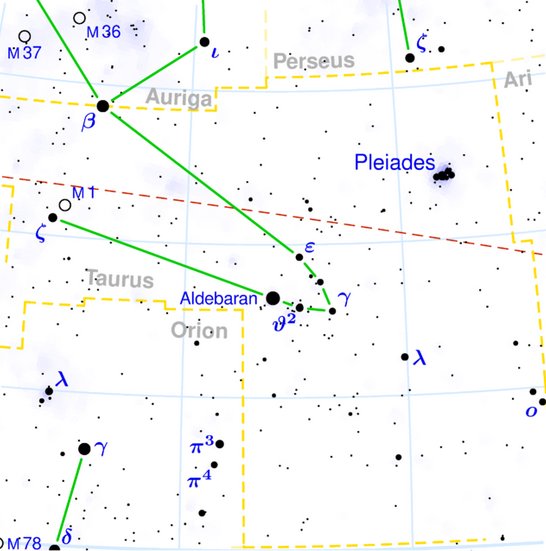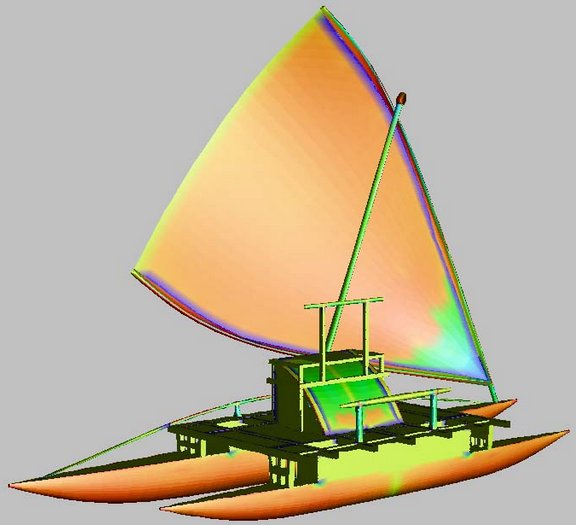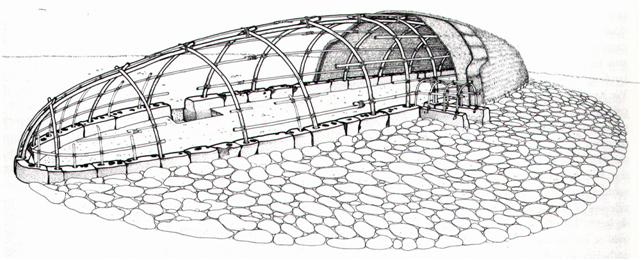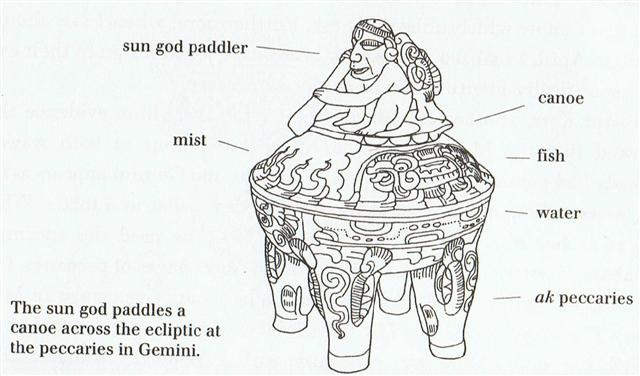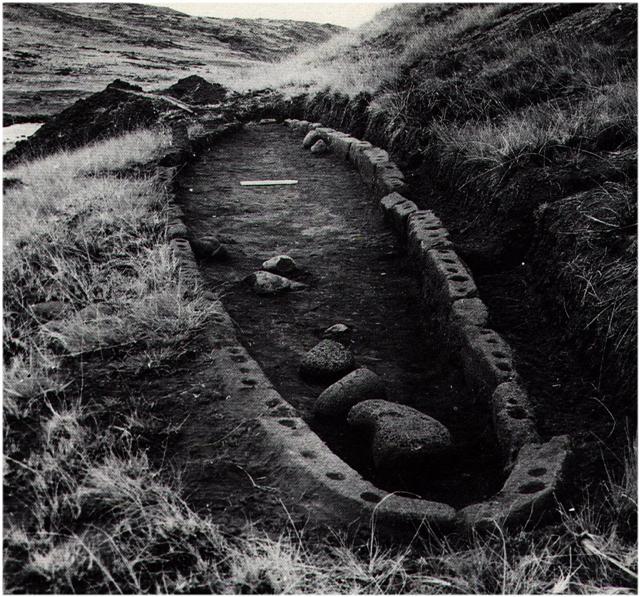Once again. After 365 glyphs = 365 days the stars had returned to the Hyades Gate (γ and δ Tauri):
Anciently the season of sailing began when the Pleiades returned to view 'in May': ... Alcyone, daughter of Pleione, 'Queen of Sailing', by the oak-hero Atlas, was the mystical leader of the seven Pleiads. The heliacal rising of the Pleiads in May marked the beginning of the navigational year; their setting marked its end when (as Pliny notices in a passage about the halcyon) a remarkably cold North wind blows ... This would surely have been known by the greatest sailers of all, the Polynesians.
The Pleiades rose heliacally 8 days earlier than the Hyades Gate (equal to the number of dark nights for Venus before her return as Morning Star) and in rongorongo times this was in day number 144 - 8 = 136 = May 16. I.e. the calendar must have been changed since the time when Alcyone was rising with the Sun 'in May' because since then the precession would have moved the stars ahead with a month or so in the year. Furthermore, 16 days were needed from its heliacal date to the day when the Pleiades returned to visibility.
The Australians are celebrating Christmas in summer, not in their darkest month June. But the sailing season should be warm and not chilly - as when for the ancient Greeks the (H)alcyon(e) 'bird' was setting half a year later. Therefore the canoes of the king and the queen should on Easter Island be drawn up on Land in the autumn month Tagaroa Uri. This month could - in a way - not have been October, because south of the equator October was a spring month, when the season of sailing would begin. In October fishing was no longer taboo. The Sun had 2 wives and at this time of the year the one in the north - who lived together with 'a kind of fish being' - had been abandoned and the Sun was now returning to his summer maid. When the Sun was going across the 'sea' for 40 nights and days at Cetus - ending with κ in May 8 (128) - it once upon a time would have marked the transition from winter to summer (north of the equator), ending with the paws of the Sea Beast planted on the Eridanus river bank:
For people on Easter Island it would however have been the opposite, with May as a month in autumn. But when they saw Cetus close to the Full Moon, half a year later in November it was a sign of how winter had changed to summer.
The Sea voyage of the canoe of the King (Hotu Matua) - lashed together with the canoe of his Queen (Ava Rei Pua) - ended, according to Manuscript E, in day 15 of the month Tagaroa Uri. They landed, their children were born, and their canoes were drawn up on Land to be turned over to become houses.
I suggest this month primarily corresponded to what their star calendar indicated. Looking in the neighbourhood of the Full Moon in 'April they could see the month 'October and nakshatra Tagaroa Uri meant their season of fishing and sailing had arrived. Fish beings could now be drawn up on land because the Full Moon was leaving Cetus.
But of course they could alternatively have used our own Gregorian (sun) calendar, in which case Tagaroa Uri would simply be translated as October:
Accoring to the G text, however, which was following the stars, precession must have moved the dates ahead with 27 days since the time when the First Point of Aries was at 0h, and this meant the 15th night in the month of Tagaroa Uri could not adequately correspond to October 15 but it had to be 'April 15. Hau tea in Gb4-33 was not 52 days after 0h but 52 - 27 = 25 days after 0h, in day 80 + 25 = 105 counted from 'January 1. In 'April 15 the Land in the sky had been reached by the Sun (according to the constellations which showed the First Point of Aries was 25 days in the past). Or 52 days in the past as read from the updated Gregorian calendar (having added 4 precessional days for the time since Gregory XIII). The stars thus indicated their canoes should be drawn up on Land in Tagaroa Uri 15. The canoes should be turned over to become houses, to stop them from further moving. Houses were stable and built on Land, whereas canoes were quickly moving across the Sea.
This 'sun god paddler' is carried by a 'fish' under his canoe (moving upon 'stones') and he also carries a fish being on his back. Hare paega houses were built on foundations of stones (star positions):
|
|||||||||||||||||||||||||||||||||||||||||||||||||||||||||||||||||||||||||||||||||||||||||||||||||||||||||||||||||||||||||||||||||||||||||||||||||||||||||||||||||||||||||||||||||||||||||||||||||||||||||||||||||||||||||||||||||||||||||||||||||||||||||||||||||||||||||||||||||||||||||||||||||||||||||||||||||||||||||||||||||||||||||





